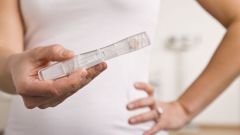Instruction
1
In the process of sexual intercourse, millions of sperm get into the female reproductive system. These cells pass through the cervical canal into the uterus, and then up the fallopian tubes. In the process of moving a large number of spermatozoa die and only a few hundred of them reaches the egg. In the course of its travel, the male sex cells change the structure and nature of the movement, preparing himself to merge. As soon as the sperm enters the fallopian tube, it tries to penetrate the egg, producing a special substance, which allows to pass through the thick protective shell. Penetrating sex cell releases its genetic contents, which fuses with the nucleus of the egg. Thus ends the fertilization.
2
The journey of the sperm through the fallopian tubes can last on average 2-3 days. If the process was unsuccessful, the germ cells die before they reached the core. In this case the fertilization is caused by the time ovulation takes 12 to 24 hours. After fertilization has occurred, the egg remains for about 72 hours in the fallopian tube. Then its shell disintegrates, and the cell moves into the uterus (within 60-72 hours).
3
During the move begins the process of implantation of the fetus, which takes 5-7 days. Once in the uterus, the embryo is immersed in the endometrial layer, pre-attach to it. After implantation in the reproductive system starts the secretion of gonadotropin, which is determined by the fact of pregnancy in all kinds of pregnancy test. The hormone stimulates further production of progesterone.
4
It should be noted that ovulation occurs approximately in the middle of the menstrual cycle (approximately day 14). Trying to conceive can begin 4 days before the expected date and within 2 days thereafter. The most optimal time for fertilization occurs approximately 24 hours after the presumed ovulation.
5
It should be noted that ovulation occurs approximately in the middle of the menstrual cycle (approximately day 14). Trying to conceive can begin 4 days before the expected date and within 2 days thereafter. The most optimal time for fertilization occurs approximately 24 hours after the presumed ovulation.


